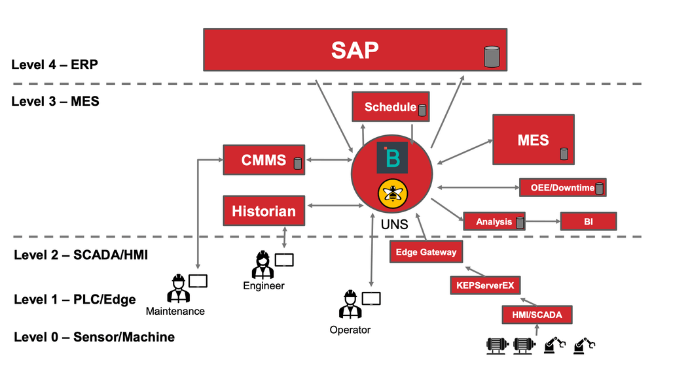How is OEE Calculated
OEE (Overall Equipment Effectiveness) provides an indication of how effectively machines are utilized on a manufacturing plant floor. It’s valuable for identifying and removing production constraints and for driving up revenue earned by every machine.
The calculation has some mysticism surrounding the complexity of its calculation. We’ll simplify the calculation to a level where the reader can immediately start calculating it by hand.
How to Calculate OEE
OEE for any machine is made up of 3 parts multiplied together: Availability (up-time) x Performance (production speed) x Quality (widgets produced correctly the first time). Below is a brief explanation of each part and how it’s calculated.
Availability Rate
Machine’s up-time, the percentage it is ready to produce products and is working properly, excluding changeover and setup time.
Formula: (Scheduled Operating Time – Downtime) / Scheduled
Operating Time
Note that Scheduled Operating Time is not “total time”. Availability refers to when the machine could be running based on when it is needed or planned to run. There could be reasons it won’t run when it is needed (i.e., setup, breakdown) and this calculation must account for those downtime reasons.
Performance Rate
The rate a machine actually produces products relative to it’s best known or standard production rate.
Formula: Actual Output / Standard Output
Note it’s critical to come to terms at your plant with what the standard production rate is for your equipment. It’s best not to use the specified or design production rate by the vendor of the product. In this case, if the machine were running faster than the design production rate and you were using the designed production rate this could mask quality or availability issues in the OEE calculation.
It’s also worth noting that the production rate will highlight losses due to idling, slowdowns, and minor stoppages.
Quality Rate
The rate the machine outputs good parts.
Formula: Right First-Time Output / Actual Output
Note that products produced by the machine which require rework or any sort of adjustments, along with scrapped products, are not counted as a quality product.
Example
Now let’s run a quick example calculation for one shift:
Availability:
Scheduled Operating Time: shift 8 hrs or 480 mins, 20 mins planned downtime, 0 mins breaks; total 460 mins
Downtime: breakdowns 30 mins, setups and adjustments 15 mins, minor stoppages 15 minutes; total 60 mins
Available time = Scheduled time – Downtime = 460 – 60 = 400 mins
Availability rate = (Scheduled Operating Time – Downtime) / Scheduled Operating Time = (460 – 60) / 460 = 87%
Performance:
Actual Output: 400 parts or 1 part/min for 400 mins of Available time
Standard Output: 800 parts or 1/2 part/min for 400 mins of Available time
Performance rate = Actual Output / Standard Output = 400 / 800 = 50%
Quality:
Right First-Time Output: 400 parts – 20 defective parts = 380 parts
Actual Output: 400 parts
Right First-Time Output / Actual Output = 380 / 400 = 95%
OEE = Availability x Performance x Quality = 87% x 50% x 95% = 41%
Additional Considerations
One must keep in mind that OEE is not a value that can be used to compare the performance of many different machines, different production lines, or even less so various plants. As you can see above, there is a lot of uniqueness built into the calculation for each machine. Each machine is unique for the schedule required of it, it’s inherent production rate (by its design), and other factors. Therefore, OEE is really only meant to be used as a metric to improve the performance of each individual machine. Monitor the OEE value for the machine, break it down into its component pieces, and hone in on the problem, fix, and then watch OEE to see if it improves after the fix.
Even if the above is true, OEE can be used to compare machines and lines, but only if they are used in a similar fashion and have similar demands.
Comparison of OEE across different lines and plants can be done but should only be done 1) when using an average OEE value, and 2) with the understanding the value will not be highly accurate.




